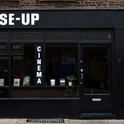Some of the 13 bankers who asked Obama for help: where are they all now?
13 Bankers by Simon Johnson and James Kwak (Pantheon, £17.48)
The Big Short by Michael Lewis (Allen Lane, £25)
Whoops! by John Lanchester (Allen Lane, £20)
In March 2009, 13 bankers went to the White House to ask President Obama for help. Among them were the chief executives of America’s biggest financial firms: Citigroup, Goldman Sachs, Bank of America and Morgan Stanley. The banking system was still in crisis, the shares of many institutions were at dangerous lows. The bankers got what they wanted. Obama, new to the job, did what was needed to restore confidence. In return he hoped that the bankers would not pay fat bonuses and would support his plans to overhaul financial regulation. The message that came out of the meeting was clear. As the bankers stood on the White House steps, they repeated the same mantra: “We’re all in this together.”
Fast forward six months to New York, and a major speech in which the president called on Wall Street to support regulatory reforms on banks. Not a single banker showed up. This story, related by Simon Johnson and James Kwak in 13 Bankers, encapsulates the crisis. It’s been take, take, take by the bankers—without them giving anything much in return. Just look at the balance sheet. Despite a deep recession and huge budget deficits, Washington has helped the banks out mightily since the crisis broke in 2007. They have received injections of capital and state guarantees for their debts. At the same time, the crunch has thinned the competition.
And what’s on the other side? The banks have barely cut their enormous bonus cheques, prompting Obama to dub them as irresponsible and, in Britain, the head of the CBI to talk of top executives, including bankers, as “aliens.” The name-calling is worrying; it looks weak. Meanwhile, the “aliens” have lobbied hard against any restrictions on their business. Far from all being in it together, the banks sometimes give the impression that they feel they have the upper hand. And perhaps they do. After all, having helped them survive the crisis, the politicians now need their acquiescence to secure the recovery.
An article by Johnson in the May 2009 issue of the Atlantic, compared Wall Street to the “genteel” oligarchies found in the emerging economies he had dealt with in his previous role as the chief economist of the IMF. These oligarchs used their political connections to secure their countries’ best business opportunities. Periodically, they would get overexcited and borrow too much. A speculative boom would ensue, followed by a bust. The oligarchs’ political connections would ensure that they got bailed out, while other less well-connected entrepreneurs would go to the wall. So the oligarchy perpetuated itself.
Wall Street, Johnson asserted, had come to play a similar role in the economy. It had intertwined itself with government to a degree that meant that the state might not let it fail—no matter how reckless its conduct. The article resonated partly because of the bailout the banks got in 2008. The government recapitalised them so generously that one chief executive—John Mack of Morgan Stanley—signed without even telling his board. It also resonated because Hank Paulson, then treasury secretary, and many of his officials were former employees of Goldman Sachs.
In 13 Bankers, the authors expand on this theme. Historically, America had such a suspicion of financial institutions that it did not even have a central bank until 1913. How could the country come to be so in thrall to finance? The US had flirted with entrepreneurial banking once before—at the beginning of the last century—but this ended badly with the 1929 crash, after which the sector was heavily regulated. The shift back to the deregulatory tack started, Johnson and Kwak suggest, when academic theories about efficient markets in the 1960s and 1970s gave a theoretical push to deregulation.
It was not until the Clinton era in the 1990s, however, that Wall Street really burrowed its way into the heart of Washington. A booming finance sector became a key source of campaign finance to congress. The administration was eager to show that it was Wall Street-friendly to reassure the bond market. Its leading lights were ex-bankers and academic economists, who were sympathetic to deregulation. One after another, the depression-era shackles on finance were removed.
What differentiates the Wall Street oligarchy from its emerging market equivalents, Kwak and Johnson argue, is that it does not depend on corruption but on what they call “cultural capital.” “Politics is like sales,” they write. “If you are trying to close a deal with a major corporation, it helps to have friends on the inside, it helps to have buyers who see their fortunes aligned with yours… But it is even better if the buyers really, independently, want what you are selling. It is best of all if they believe what you are selling is a symbol of their own judgement and sophistication—and that buying your product marks them as part of the informed elite.”
Wall Street had just such a pitch. It persuaded politicians and opinion formers that a sophisticated, unconstrained finance sector was actually beneficial for the US. At the heart of this was the idea of financial innovation as a public good.
“Innovation” is a powerful word. We connect it with technological advance and the material benefits of this are all around us—from household appliances to computers. Wall Street’s case was that derivatives and securitisation were innovations on a par with these goods. It just needed the space and freedom to develop them. And the promised benefits? They were mortgages and cheap consumer credit for the less well off. The Clinton administration, conscious that poorer minority communities had low levels of home ownership and little access to credit, bought the idea.
Wall Street got what it wanted, but instead of the promised societal benefits we got a mad boom followed by the credit crunch. This is the backdrop to Michael Lewis’s book, The Big Short. Lewis—a journalist and former bond trader who wrote Liar’s Poker, the defining book on 1980s Wall Street, tells an engaging story: how a few oddball hedge fund investors, including two youthful hippies and a one-eyed autistic recluse, penetrated the disinformation and spin surrounding the world of subprime mortgages and made fortunes betting that the market would crack.
Lewis captures well the infectious greed that powered the bankers to their (near) doom. But his “hedgies” don’t quite work as heroes. While they tell Lewis that they deplore the financial excess they saw, they had too big a stake in the game continuing to do anything to stop it. The subprime mortgage market has caused a great deal of human misery. It is hard to admire fortunes accumulated from it.
In the US, campaign contributions are still pouring in, and these may have helped to keep Washington onside. Yet given the scale of the crisis it is still surprising that politicians on either side of the Atlantic have any faith left in finance (banks have saddled taxpayers with an even bigger bill relative to the British economy). Cultural capital may be the most important factor. Politics has been so financialised that it is hard to break the link. It’s a dynamic that, writing about Britain, the author John Lanchester describes as a “reverse takeover in which City values came to dominate the whole of British life.”
Lanchester’s Whoops! is an analytical take on the crisis—if less polemical than 13 Bankers. A novelist whose interest in finance stems partly from his father’s career as a banker, his great merit is that he is not an insider and therefore unpicks with great elegance and clarity the esoteric language that cloaks modern banking. He is sometimes a little shaky on details, however—such as the British housing market. Britain does not have the highest home ownership rates in Europe, nor is it the only country to offer variable rate mortgages. Moreover, the book lacks a strong conclusion. He thinks the “City” model has failed but isn’t sure what should replace it. He concludes that it would be better if we were a bit less greedy.
Waiting for bankers to be less greedy sounds like whistling in the wind. Johnson and Kwak argue for a more muscular approach. First, they want better consumer protection. The global financial system may have been poisoned by toxic subprime mortgages—but almost all of those mortgages were sold in the US. It is hard to disagree that an independent consumer financial protection agency is vital. Sadly, congress has backed away from offering one. (Britain, to its credit, has pretty good consumer protection). A solution is also needed to the “too big to fail” problem (see Simon Johnson’s column in this issue, p16). This is a distortion that has come about because investors believe that large financial institutions will not be allowed to fail in a crisis. They are therefore willing to lend more to big banks on finer terms. This is in effect a hidden subsidy from the state. It both skews competition and exposes taxpayers to ever larger losses in a future crisis. There is, needless to say, no evidence that large banks enjoy any intrinsic business advantages. But there is plenty of evidence that they are unmanageable.
Regulators in the US and Europe are trying to deal with this distortion by requiring banks to hold more capital and to produce “living wills”—documents that set out how they might fail in a crisis. Too complex, say Johnson and Kwak. They have a simpler solution. No bank’s assets should exceed 4 per cent of the GDP of the country in which it is regulated. For riskier investment banks, the figure would be 2 per cent. Royal Bank of Scotland, when it failed, had assets worth more than 100 per cent of British GDP. Banks this big would be shivered into fragments. This may seem simplistic. But sometimes a simple—harder to game—rule is better than a complex one. After all, the depression era Glass-Steagall Act, which separated commercial and investment banking in the US, worked well enough for 60 years.
The banking oligarchy took time to establish itself. It may also take time to dislodge. Johnson and Kwak compare the struggle to Theodore Roosevelt’s battle with the trusts after 1900. It took more than a decade to break up Standard Oil. If that is the case, we’d better hope we don’t have another financial crisis in the interim. As Lanchester observes, the financial sector looks like a man who has discharged himself from hospital after a heart attack and gone off to celebrate with “a carton of Rothmans, a bottle of tequila and a super-sized Big Mac with jumbo fries.” The next coronary may be sooner than we think.
13 Bankers by Simon Johnson and James Kwak (Pantheon, £17.48)
The Big Short by Michael Lewis (Allen Lane, £25)
Whoops! by John Lanchester (Allen Lane, £20)
In March 2009, 13 bankers went to the White House to ask President Obama for help. Among them were the chief executives of America’s biggest financial firms: Citigroup, Goldman Sachs, Bank of America and Morgan Stanley. The banking system was still in crisis, the shares of many institutions were at dangerous lows. The bankers got what they wanted. Obama, new to the job, did what was needed to restore confidence. In return he hoped that the bankers would not pay fat bonuses and would support his plans to overhaul financial regulation. The message that came out of the meeting was clear. As the bankers stood on the White House steps, they repeated the same mantra: “We’re all in this together.”
Fast forward six months to New York, and a major speech in which the president called on Wall Street to support regulatory reforms on banks. Not a single banker showed up. This story, related by Simon Johnson and James Kwak in 13 Bankers, encapsulates the crisis. It’s been take, take, take by the bankers—without them giving anything much in return. Just look at the balance sheet. Despite a deep recession and huge budget deficits, Washington has helped the banks out mightily since the crisis broke in 2007. They have received injections of capital and state guarantees for their debts. At the same time, the crunch has thinned the competition.
And what’s on the other side? The banks have barely cut their enormous bonus cheques, prompting Obama to dub them as irresponsible and, in Britain, the head of the CBI to talk of top executives, including bankers, as “aliens.” The name-calling is worrying; it looks weak. Meanwhile, the “aliens” have lobbied hard against any restrictions on their business. Far from all being in it together, the banks sometimes give the impression that they feel they have the upper hand. And perhaps they do. After all, having helped them survive the crisis, the politicians now need their acquiescence to secure the recovery.
An article by Johnson in the May 2009 issue of the Atlantic, compared Wall Street to the “genteel” oligarchies found in the emerging economies he had dealt with in his previous role as the chief economist of the IMF. These oligarchs used their political connections to secure their countries’ best business opportunities. Periodically, they would get overexcited and borrow too much. A speculative boom would ensue, followed by a bust. The oligarchs’ political connections would ensure that they got bailed out, while other less well-connected entrepreneurs would go to the wall. So the oligarchy perpetuated itself.
Wall Street, Johnson asserted, had come to play a similar role in the economy. It had intertwined itself with government to a degree that meant that the state might not let it fail—no matter how reckless its conduct. The article resonated partly because of the bailout the banks got in 2008. The government recapitalised them so generously that one chief executive—John Mack of Morgan Stanley—signed without even telling his board. It also resonated because Hank Paulson, then treasury secretary, and many of his officials were former employees of Goldman Sachs.
In 13 Bankers, the authors expand on this theme. Historically, America had such a suspicion of financial institutions that it did not even have a central bank until 1913. How could the country come to be so in thrall to finance? The US had flirted with entrepreneurial banking once before—at the beginning of the last century—but this ended badly with the 1929 crash, after which the sector was heavily regulated. The shift back to the deregulatory tack started, Johnson and Kwak suggest, when academic theories about efficient markets in the 1960s and 1970s gave a theoretical push to deregulation.
It was not until the Clinton era in the 1990s, however, that Wall Street really burrowed its way into the heart of Washington. A booming finance sector became a key source of campaign finance to congress. The administration was eager to show that it was Wall Street-friendly to reassure the bond market. Its leading lights were ex-bankers and academic economists, who were sympathetic to deregulation. One after another, the depression-era shackles on finance were removed.
What differentiates the Wall Street oligarchy from its emerging market equivalents, Kwak and Johnson argue, is that it does not depend on corruption but on what they call “cultural capital.” “Politics is like sales,” they write. “If you are trying to close a deal with a major corporation, it helps to have friends on the inside, it helps to have buyers who see their fortunes aligned with yours… But it is even better if the buyers really, independently, want what you are selling. It is best of all if they believe what you are selling is a symbol of their own judgement and sophistication—and that buying your product marks them as part of the informed elite.”
Wall Street had just such a pitch. It persuaded politicians and opinion formers that a sophisticated, unconstrained finance sector was actually beneficial for the US. At the heart of this was the idea of financial innovation as a public good.
“Innovation” is a powerful word. We connect it with technological advance and the material benefits of this are all around us—from household appliances to computers. Wall Street’s case was that derivatives and securitisation were innovations on a par with these goods. It just needed the space and freedom to develop them. And the promised benefits? They were mortgages and cheap consumer credit for the less well off. The Clinton administration, conscious that poorer minority communities had low levels of home ownership and little access to credit, bought the idea.
Wall Street got what it wanted, but instead of the promised societal benefits we got a mad boom followed by the credit crunch. This is the backdrop to Michael Lewis’s book, The Big Short. Lewis—a journalist and former bond trader who wrote Liar’s Poker, the defining book on 1980s Wall Street, tells an engaging story: how a few oddball hedge fund investors, including two youthful hippies and a one-eyed autistic recluse, penetrated the disinformation and spin surrounding the world of subprime mortgages and made fortunes betting that the market would crack.
Lewis captures well the infectious greed that powered the bankers to their (near) doom. But his “hedgies” don’t quite work as heroes. While they tell Lewis that they deplore the financial excess they saw, they had too big a stake in the game continuing to do anything to stop it. The subprime mortgage market has caused a great deal of human misery. It is hard to admire fortunes accumulated from it.
In the US, campaign contributions are still pouring in, and these may have helped to keep Washington onside. Yet given the scale of the crisis it is still surprising that politicians on either side of the Atlantic have any faith left in finance (banks have saddled taxpayers with an even bigger bill relative to the British economy). Cultural capital may be the most important factor. Politics has been so financialised that it is hard to break the link. It’s a dynamic that, writing about Britain, the author John Lanchester describes as a “reverse takeover in which City values came to dominate the whole of British life.”
Lanchester’s Whoops! is an analytical take on the crisis—if less polemical than 13 Bankers. A novelist whose interest in finance stems partly from his father’s career as a banker, his great merit is that he is not an insider and therefore unpicks with great elegance and clarity the esoteric language that cloaks modern banking. He is sometimes a little shaky on details, however—such as the British housing market. Britain does not have the highest home ownership rates in Europe, nor is it the only country to offer variable rate mortgages. Moreover, the book lacks a strong conclusion. He thinks the “City” model has failed but isn’t sure what should replace it. He concludes that it would be better if we were a bit less greedy.
Waiting for bankers to be less greedy sounds like whistling in the wind. Johnson and Kwak argue for a more muscular approach. First, they want better consumer protection. The global financial system may have been poisoned by toxic subprime mortgages—but almost all of those mortgages were sold in the US. It is hard to disagree that an independent consumer financial protection agency is vital. Sadly, congress has backed away from offering one. (Britain, to its credit, has pretty good consumer protection). A solution is also needed to the “too big to fail” problem (see Simon Johnson’s column in this issue, p16). This is a distortion that has come about because investors believe that large financial institutions will not be allowed to fail in a crisis. They are therefore willing to lend more to big banks on finer terms. This is in effect a hidden subsidy from the state. It both skews competition and exposes taxpayers to ever larger losses in a future crisis. There is, needless to say, no evidence that large banks enjoy any intrinsic business advantages. But there is plenty of evidence that they are unmanageable.
Regulators in the US and Europe are trying to deal with this distortion by requiring banks to hold more capital and to produce “living wills”—documents that set out how they might fail in a crisis. Too complex, say Johnson and Kwak. They have a simpler solution. No bank’s assets should exceed 4 per cent of the GDP of the country in which it is regulated. For riskier investment banks, the figure would be 2 per cent. Royal Bank of Scotland, when it failed, had assets worth more than 100 per cent of British GDP. Banks this big would be shivered into fragments. This may seem simplistic. But sometimes a simple—harder to game—rule is better than a complex one. After all, the depression era Glass-Steagall Act, which separated commercial and investment banking in the US, worked well enough for 60 years.
The banking oligarchy took time to establish itself. It may also take time to dislodge. Johnson and Kwak compare the struggle to Theodore Roosevelt’s battle with the trusts after 1900. It took more than a decade to break up Standard Oil. If that is the case, we’d better hope we don’t have another financial crisis in the interim. As Lanchester observes, the financial sector looks like a man who has discharged himself from hospital after a heart attack and gone off to celebrate with “a carton of Rothmans, a bottle of tequila and a super-sized Big Mac with jumbo fries.” The next coronary may be sooner than we think.













